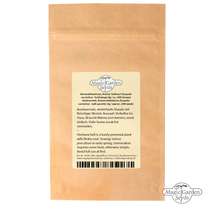
Belladonna, or better known as the deadly nightshade, is a toxic perennial that belongs to the Solanaceae family, Solanaceae. It is widespread throughout the world, with its main natural habitat in the Mediterranean, East Asia and North Africa.
Belladonna is found in Spain, Italy, Morocco, Egypt, Iraq and Iran and is a widespread plant, although parts of its natural habitat have been affected by human activities. Red berries are usually harvested ripe and dried, and the berries contain bitter juices that are used to make tea, perfume, medicine, and cooking. In traditional medicine belladonna is used as an anti-inflammatory agent, as well as for stomach problems, nausea, vomiting and flatulence.
Belladonna has long been used to treat stomach problems, abdominal pain and cramps, indigestion, diarrhea, and as a pain reliever. However, the exact effect of belladonna on the human body is not fully understood; it is known to cause some degree of toxicity, but no direct long-term effects have been observed.
When swallowed, belladonna acts on the intestinal mucosa, causing intestinal obstruction, which leads to a temporary, and sometimes permanent, stoppage of digestion. This, in turn, leads to loss of appetite and vomiting; however, Belladona is not considered dangerous when consumed in small amounts and does not appear to harm pregnant women or babies.
Due to the similarity of the name to the well-known deadly evening shade (containing the chemical belladonna), some experts believe that this plant is a variety of deadly nightshade. But others believe that the two are not really related. Many of the same characteristics of belladonna can be found in other species of the nightshade family, so it is possible that belladonna is related to other species of the nightshade family. Other plants in this family, including strychnos nuxvomica, strychnos clothing, and crocodylium, are also poisonous when eaten.
Since belladonna has been used for centuries for medicinal purposes, we are all very familiar with its effects on humans, and therefore it is considered a relatively harmless plant, but what effect does it have on animals and birds? The fact that it is toxic to humans, in particular children, should not be alarming in animals unless mixed with another poisonous plant, as Belladona contains a compound that may be toxic to certain animals (mammals).

Animals such as rats and mice can die from eating belladonna. Even birds, the so-called "nightmare rats" in the Zoological Garden of Vienna, can be poisoned by belladonna, as well as birds and reptiles, including snakes. The poison, toxic to humans, is also dangerous to animals and birds.
As mentioned earlier, belladonna red berries are used to make tea, but some people consume them as belladonna tea to treat stomach ailments, headaches, nausea, vomiting, flatulence, intestinal cramps, etc. juice and mixed with honey.
It is quite effective in treating stomach pain as it is very bitter and can easily induce vomiting and indigestion, so belladonna acts as a pain reliever. It is also said to have anti-inflammatory properties and help prevent the absorption of cholesterol from the digestive tract.
As a natural dietary supplement, the berry can also be applied to the skin to treat rashes and burns and to prevent infections, but belladonna should not be taken by mouth due to its dangerous side effects. Although belladonna has no toxic side effects in animals, overdose can be fatal, which can lead to seizures and paralysis.
One of the most important uses of belladonna is in treating abdominal pain. However, due to side effects, belladonna should not be taken orally or orally, as the medicine can affect blood vessels or other internal organs.
Because belladonna is quite toxic and has many side effects in humans and animals, it should not be consumed by pregnant women and babies. Berries should not be swallowed raw, as they contain a number of toxic substances that can lead to poisoning and death.
